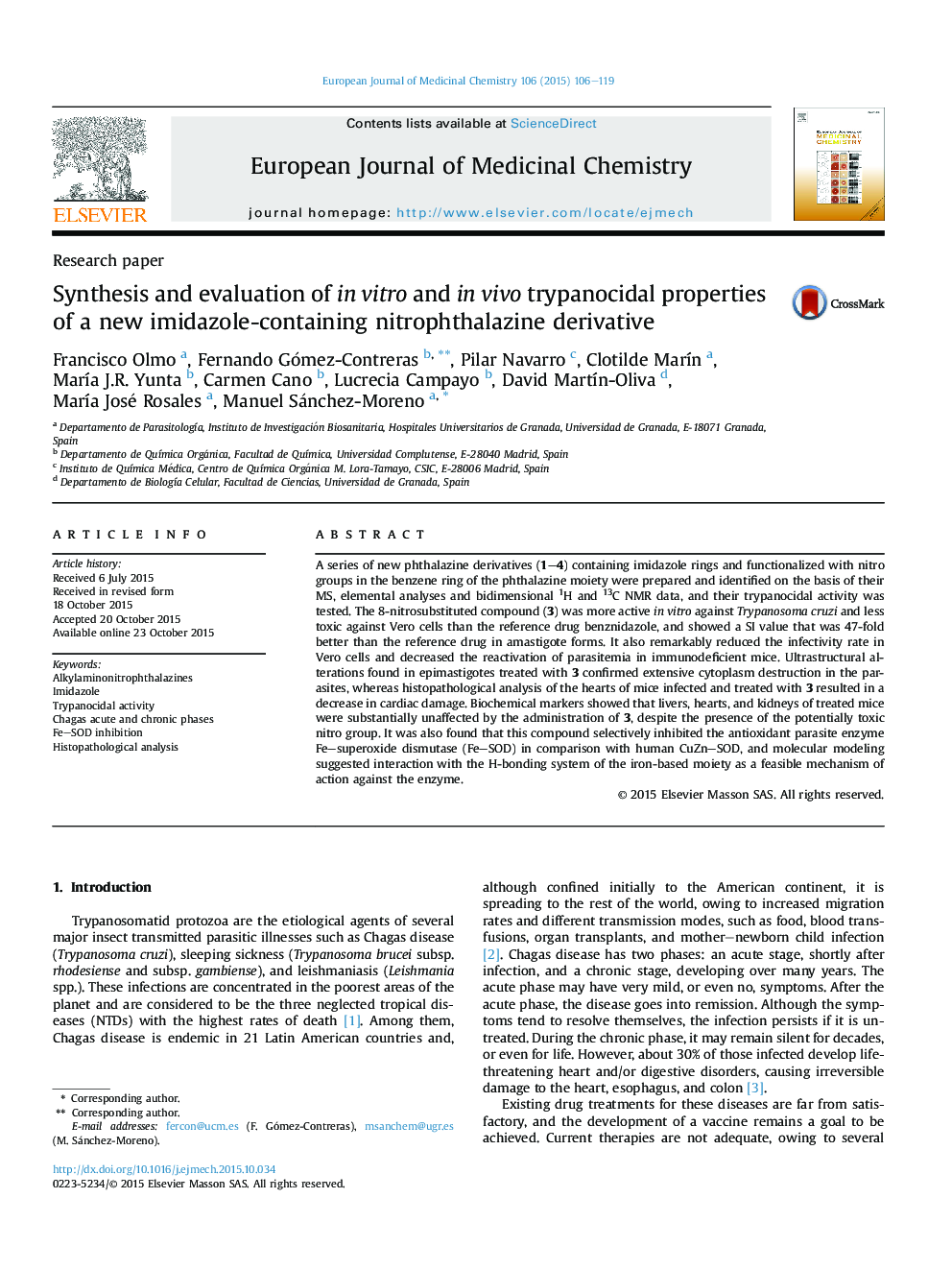| Article ID | Journal | Published Year | Pages | File Type |
|---|---|---|---|---|
| 1398719 | European Journal of Medicinal Chemistry | 2015 | 14 Pages |
•A new 8-nitrophthalazine derivative with high trypanocidal activity is synthesized.•Compound 3 exhibits low toxicity and decreases cardiac damage in infected mice.•Trypanocidal activity is related to a high inhibition of the parasite Fe−SOD enzyme.•Fe–SOD might be deactivated by modification of H-bonds close to the active center.•Fe–SOD enzyme could be a promising target in the design of new anti-Trypanosoma cruzi drugs.
A series of new phthalazine derivatives (1–4) containing imidazole rings and functionalized with nitro groups in the benzene ring of the phthalazine moiety were prepared and identified on the basis of their MS, elemental analyses and bidimensional 1H and 13C NMR data, and their trypanocidal activity was tested. The 8-nitrosubstituted compound (3) was more active in vitro against Trypanosoma cruzi and less toxic against Vero cells than the reference drug benznidazole, and showed a SI value that was 47-fold better than the reference drug in amastigote forms. It also remarkably reduced the infectivity rate in Vero cells and decreased the reactivation of parasitemia in immunodeficient mice. Ultrastructural alterations found in epimastigotes treated with 3 confirmed extensive cytoplasm destruction in the parasites, whereas histopathological analysis of the hearts of mice infected and treated with 3 resulted in a decrease in cardiac damage. Biochemical markers showed that livers, hearts, and kidneys of treated mice were substantially unaffected by the administration of 3, despite the presence of the potentially toxic nitro group. It was also found that this compound selectively inhibited the antioxidant parasite enzyme Fe–superoxide dismutase (Fe–SOD) in comparison with human CuZn–SOD, and molecular modeling suggested interaction with the H-bonding system of the iron-based moiety as a feasible mechanism of action against the enzyme.
Graphical abstractA new nitrophthalazine derivative 3 was effective against Trypanosoma cruzi parasites, inhibited the activity of their Fe–SOD enzyme and did not show remarkable side-effects in mice.Figure optionsDownload full-size imageDownload as PowerPoint slide
